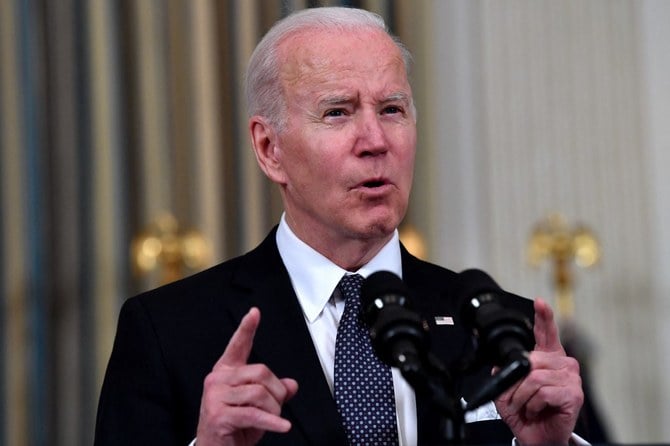
This article looks at the numbers in Iran’s defense budget before and after the signing of the 2015 nuclear deal with the P5+1 group, under which $110 billion-worth of assets were released. We also attempt to figure out the rationale behind Iran continuously announcing its military activities in recent years, including the unveiling of diverse categories of weapons, launching massive military projects, and financing regional proxies. All of this has happened while Iran claims that its defense budget does not exceed $20 billion.
The article also tries to track some of Iran’s overseas arms deals and military activities, as well as those covert military activities not included in the official budget. To understand the divergence between Iran’s official claims and reality, we investigate the possibility of undisclosed financial sources boosting Iran’s defense budget. This will be done to show how misleading the government’s figures are.
Data from Iran’s military budgets between 2010 and 2020 shows that defense spending declined when Iran experienced periods of extensive sanctions and when the rial’s value declined against foreign currencies, such as in the period from 2013 to 2014. During this period, the budget declined from $14.2 billion in 2012 to $11.2 billion in 2013. These figures returned to normal during the period from 2016 to 2017, before going down again between 2018 and 2020, after the US pulled out of the nuclear deal and reimposed unilateral sanctions on Tehran.
In 2016, while enjoying the benefits of the nuclear deal, Iran’s expenditure on weapons rose significantly, from $13 million in 2015 to $413 million. This indicates that Tehran took advantage of the period following the signing of the nuclear deal and the resulting easing of sanctions. Prior to this, in 2007, Iran also signed an $800 million agreement to buy the Russian S-300 air defense system, although it eventually received an upgraded version in 2016 following protracted negotiations and delays. Although Iran’s regime paid extra to receive this upgraded version, the additional costs did not appear in the value of total external purchases. This strongly indicates that payment for this transaction was done outside the scope of the defense budget and involved covert mechanisms.
It is worth noting that Iran also sells some of its own military products, with the World Data Atlas indicating that its revenue from the sales of arms between 2010 and 2017 amounted to nearly $270 million. Iran also announced that it would resume its sales of arms following the expiration of a UN embargo on Sunday.
There are also the costs of other Iranian military activities that are not included in the official defense budget, such as the war in Syria, its nuclear program, and its support for the Quds Force, Lebanon’s Hezbollah and numerous other militias in Iraq, Syria and Yemen, as well as support for various missiles programs whose total costs — according to the scarce available information — surpass $19 billion. One of the reasons for the Iranian regime’s blurry budget announcements is its desire to cover up its illegal activities, which could put it at risk of an all-out international embargo and classification as a state sponsor of terrorism.
Tehran’s total military expenditure is actually more than twice the defense budget. Therefore, it is believed that the official published figures for Iran’s defense budget are wholly false and there is either a deliberate attempt to mislead by announcing such modest defense budget figures or there are other sources of funding not included in the declared defense allocations.
We are inclined to believe that the latter is closer to the truth for several reasons, foremost among which is the Islamic Revolutionary Guard Corps’ (IRGC) massive investment empire, whose activities are not subject to review within the official budget. Through these investment projects, the IRGC controls nearly 50 percent of the commercial and industrial businesses and banks inside Iran.
The IRGC runs between 500 and 800 companies and institutions in vital investment fields, which are fundamental to Iran’s economic arteries. The Iranian government’s budget does not include the revenue generated from these businesses, while they are also exempt from taxes, customs duties and other fees. They are also given support and priority when launching mega-projects, which helps these businesses exercise a monopoly over the Iranian market. These businesses also have multiple and diverse investments in several other countries worldwide, operating under the names of individuals with covert links to the IRGC. The revenue generated from these projects help Iran adapt to the US’ economic sanctions and maintain its expenditure on military activities and important deals.
Based on the foregoing, we can conclude four things.
First is that, even though there is no official data about the money spent on Iranian defense projects, estimates indicate that the regime spends nearly $40 billion per year on them. This estimate is based on its expenditure on annual projects, which is close to $19 billion, although it may even exceed this figure. This is in addition to the allocated annual budget, which amounts to $20 billion. Therefore, upon the lifting of sanctions, Iran is expected to increase its military spending in line with its needs, expansionist outlook, and its tireless pursuit to become militarily self-sufficient. The revenues from the IRGC’s massive investments — and the support it receives from the National Development Fund during crises — have helped it achieve the goals mentioned.
Second, there is a clear desire from some Western countries to downplay the Iranian defense budget by relying on the declared figures only. This is due to the activities of the Iran lobby in the West, which uses the misleading official figures to spread propaganda and to show the country as a victim. In addition, this lobby uses misleading figures to criticize Iran’s neighbors, especially Saudi Arabia, for their rising defense budgets and show it as an innocent victim in line with the official published arms expenditure data. This lobby claims that an embargo should not be imposed on Iran due to an imbalance of military power; but this argument fails to acknowledge that Iran’s regime manufactures and develops many of its weapons at home, breaching many intellectual property rights. This is in addition to bartering oil for weapons.
For these reasons, even a shallow reading of Iran’s defense budget indicates that it is misleading. An annual budget of no more than $20 billion over the past 10 years, including periods of economic embargo, could never have accomplished all of Iran’s military projects without the regime relying on other sources to meet their costs.
Third, after the lifting of the embargo on arms purchases imposed on Iran, the regime will, without doubt, spend more money on acquiring weapons. Already, some of Iran’s allies, such as Russia and China, are waiting for it to be allowed to import weapons in agreement with the provisions of the nuclear deal. In case of the sanctions not being reintroduced, Iran will definitely seek to implement more weapon programs, such as boosting its missile capabilities, accelerating work on its nuclear program, and modernizing its air force, which has not been done since the beginning of the revolution, and naval force, allowing it to operate in international waters.
Fourth is that the reports of the International Atomic Energy Agency and the Joint Comprehensive Plan of Action’s Joint Commission show that Iran’s advanced capabilities in the nuclear field are an indication of its capabilities and show the possibility of it achieving technical nuclear success in case the sanctions are lifted. Specialized reports have indicated that Iran is four to five months away from obtaining the capability to produce a nuclear weapon and that it has enriched uranium to beyond 50 percent in recent months.
An annual budget of no more than $20 billion over the past 10 years could never have accomplished all of Tehran’s military projects.
Dr. Mohammed Al-Sulami
In conclusion, Iran has managed to pursue its military projects despite the embargo imposed on it by the international community owing to its nuclear ambitions. Although Iran succeeded in clinching a deal with the P5+1 countries, mitigating the embargo’s impact on its economy and military projects, the US decided not to continue as a party to the nuclear agreement and reimposed sanctions on it. These sanctions rattled Iran. As a result, it attempted to pressure the international community by presenting itself as an influential regional power despite the harsh circumstances. This is in addition to its attempts to create crises to again exert pressure to find a way to ease sanctions.
With the ban now lifted and the ongoing political bickering between the major world powers — especially the US, Russia and China — it is expected that hostile Iranian acts, threats to international navigation, and support for different militias will be intensified. Iran will also continue to pursue a policy of misinformation about its defense budget and refrain from announcing the real figures.
Dr. Mohammed Al-Sulami is Head of the International Institute for Iranian Studies (Rasanah). Twitter: @mohalsulami
Disclaimer: Views expressed by writers in this section are their own and do not necessarily reflect Arab News" point-of-view











